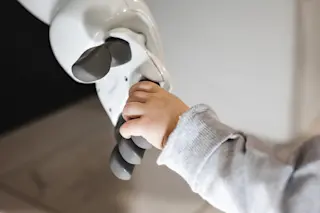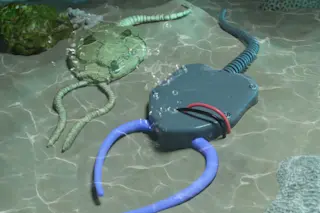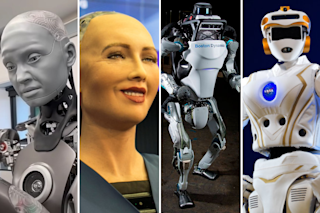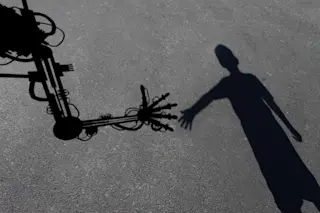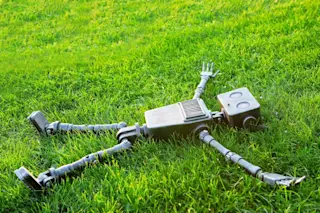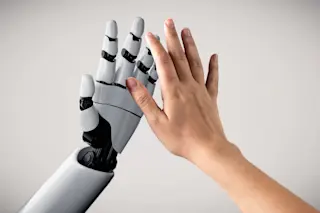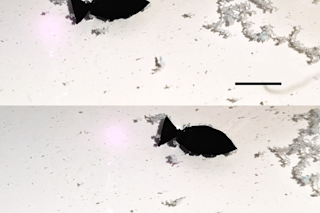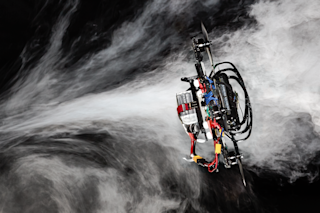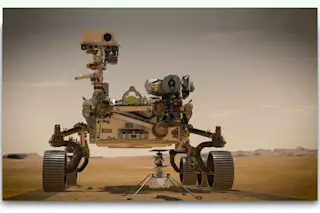Once a year, robots battle one another to show off their aptitude for the world's most popular sport. The 2000 Robot World Cup Initiative, in Melbourne, Australia, drew mechanical soccer players from 19 countries, divided into leagues of small, mid-sized, and legged contenders. A team from Cornell University swept the small division with its six-inch-cube players, which benefited from a backward- spinning roller that hugged the ball as the robot headed for the goal and a three-wheeled system that let the robots move in any direction. Albert-Ludwig University in Germany won the mid-sized division with three-foot-tall machines that scored goals using a bar with flippers at either end to help hold onto the ball. The robots all shared sensor data through a central computer, so the goalie knew where to stand even if it couldn't see the ball. The University of New South Wales in Australia dominated the legged division, which consisted of Sony's robotic dogs with custom software. The New South Wales soccer-bots took long, low strides and then dropped down to kick the ball with both front feet. RoboCup is more than a game; it is intended to encourage the development of useful mobile robots. Next year there may be some bipedal contestants. The founders of the RoboCup Federation want to pit the two-legged robots against humans and aim for a machine victory by 2050.

Cornell's cube robots cleaned up at the last robotic soccer match.Photo by Cornell University/Bill Steele



